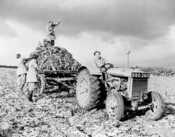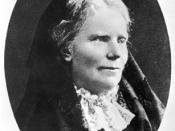When war broke out in July 1914 710,000 men were recruited to the army and by 1915 over 1 million had joined the armed forces. However, volunteer numbers were falling fast so conscription was introduced in 1916. This meant that all men aged 18-41 were required to fight at war unless they had a valid reason. With so many men at war, workers were needed on Britain's home front; so women took on 'men's jobs'. Therefore, I think that during the war, the way women lived their lives had changed immensely. However, it is questionable whether this was a temporary change or one which improved women's lives forever.
When the war began, there were vacancies for men's work and less demand for domestic jobs. This was because many men had left for war and so families were trying to economise.
Middle class women could not afford to spend their money on housemaids. Therefore, by the end of the war 400,000 less women were employed in domestic service and most had jobs in public transport or munitions, 500,000 others had clerical positions in private offices. 200,000 had agricultural positions and many others worked in governmental departments. Some women even had jobs in heavy work like ship building, furnace stoking and coal loading. Nobody was left without work because Britain needed to keep the home front moving. For instance, even in post offices thousands of women were employed to sort the 12,000,000 letters which were sent to soldiers every week!


